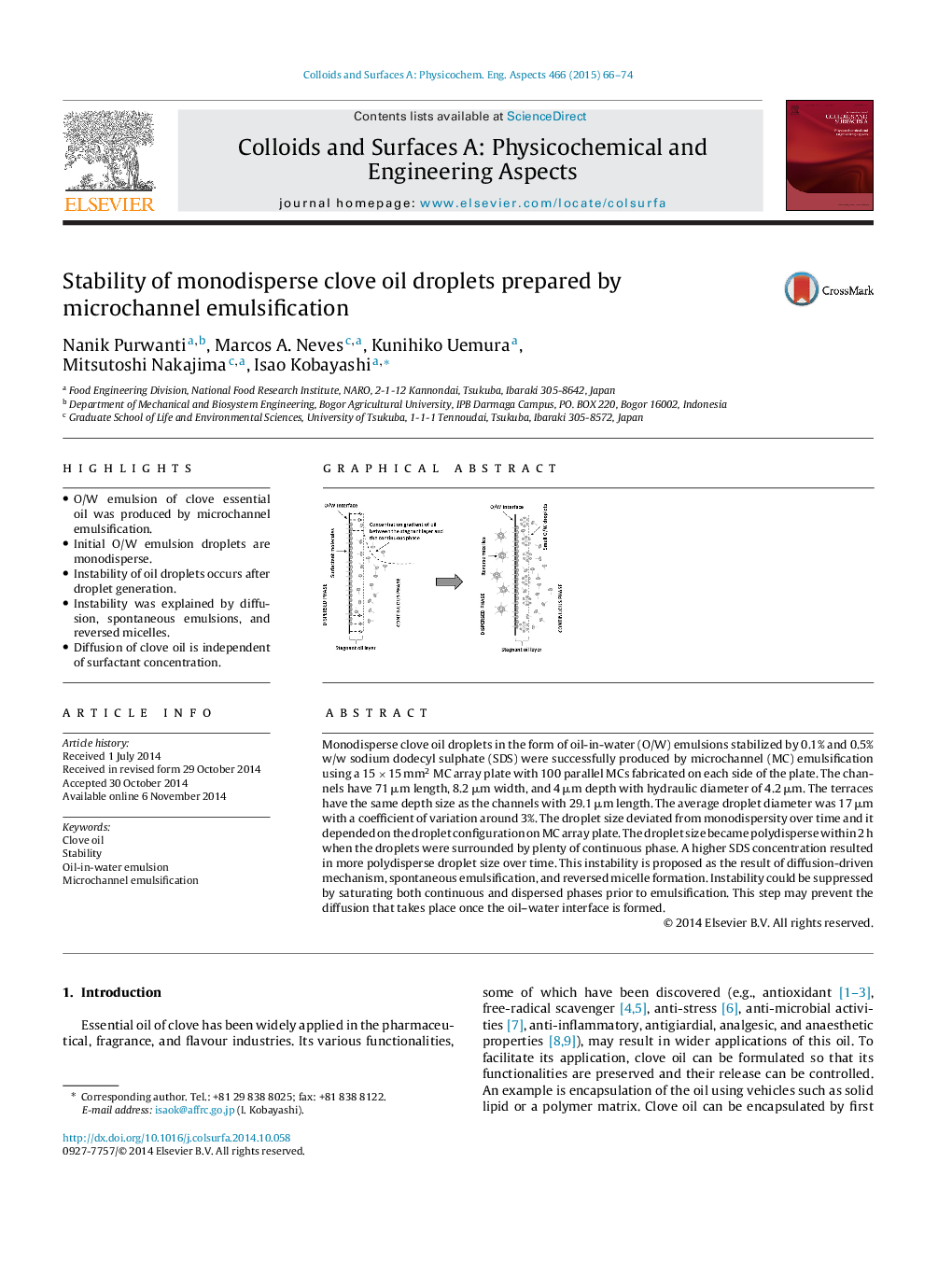| Article ID | Journal | Published Year | Pages | File Type |
|---|---|---|---|---|
| 592417 | Colloids and Surfaces A: Physicochemical and Engineering Aspects | 2015 | 9 Pages |
•O/W emulsion of clove essential oil was produced by microchannel emulsification.•Initial O/W emulsion droplets are monodisperse.•Instability of oil droplets occurs after droplet generation.•Instability was explained by diffusion, spontaneous emulsions, and reversed micelles.•Diffusion of clove oil is independent of surfactant concentration.
Monodisperse clove oil droplets in the form of oil-in-water (O/W) emulsions stabilized by 0.1% and 0.5% w/w sodium dodecyl sulphate (SDS) were successfully produced by microchannel (MC) emulsification using a 15 × 15 mm2 MC array plate with 100 parallel MCs fabricated on each side of the plate. The channels have 71 μm length, 8.2 μm width, and 4 μm depth with hydraulic diameter of 4.2 μm. The terraces have the same depth size as the channels with 29.1 μm length. The average droplet diameter was 17 μm with a coefficient of variation around 3%. The droplet size deviated from monodispersity over time and it depended on the droplet configuration on MC array plate. The droplet size became polydisperse within 2 h when the droplets were surrounded by plenty of continuous phase. A higher SDS concentration resulted in more polydisperse droplet size over time. This instability is proposed as the result of diffusion-driven mechanism, spontaneous emulsification, and reversed micelle formation. Instability could be suppressed by saturating both continuous and dispersed phases prior to emulsification. This step may prevent the diffusion that takes place once the oil–water interface is formed.
Graphical abstractFigure optionsDownload full-size imageDownload as PowerPoint slide
